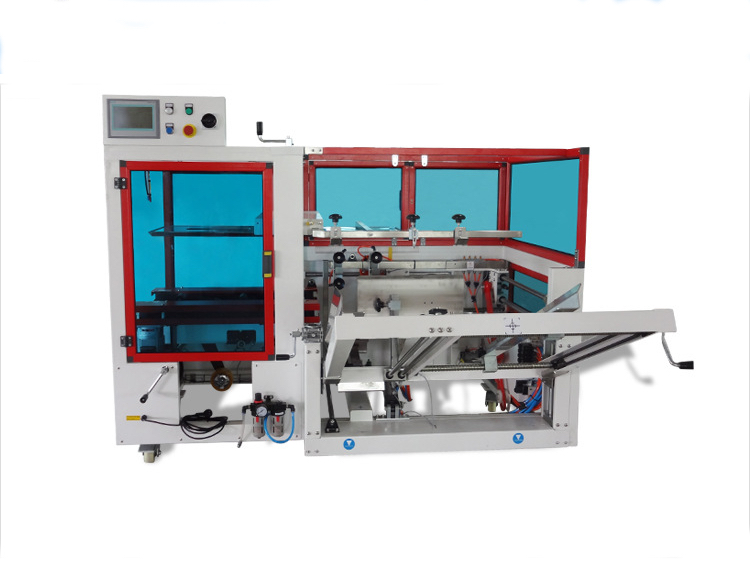A case sealer and a case erector may sound similar, but they are two completely different machines. Granted, they both work with boxes, but that is where the similarity ends.
Each of them have the potential to speed things up while at the same time, save money, which makes them incredibly useful tools all by themselves. They can each be used separately, but for maximum cost effectiveness, they should be used together.
Let’s explore the differences between these machines.
Case Erector
Perhaps a better way to say it would be to call it a box maker, because, in essence, that’s exactly what it does. This machine will take a folded cardboard box and build it, or erect it, as the name says. It will square up a box then seal the bottom and make it ready to be packed.
The best case erector can make virtually perfect boxes every time. You can even get machines that will assemble recycled, corrugated, poorer quality, or used boxes to save on having to use new or smooth stock all of the time.
To be fair, however, lower quality boxes can cause even the best machines problems. Ideally you would be using new, high quality boxes every time because there is a high correlation between the quality of the case and the performance of the machine. Lower quality boxes often lead to issues, but there are high quality machines on the market that do allow you the option of lower quality boxes.
The average person takes about 20 seconds to put a box together while even a low speed case erector takes about 7 seconds. That means a box can be made in literally one-third of the time by a machine than by a person. Plus, by putting boxes together faster, while taking far less overall time, the labor cost per assembled box is also cut down by two-thirds, and that makes a case erector much more cost effective to use than a paid employee.
Think of it this way. In 1 hour an employee, who is being paid $10 dollars per hour, can put together 180 boxes, non-stop. A case erector can put together almost 3 times that many, or 540 cases in that same time frame. For the same amount of production from an employee, you’d have to pay them $30 dollars. As you can see, using a case erector is a serious net gain in dollars and sense.
Of course, this doesn’t take into account capital costs. An operation with low volumes, say less than 300 cases per day, will likely find that, even with the labor cost savings, the capital costs of a machine outweigh the benefits. However, for operations with higher volume the savings are considerable even with capital costs.
Add to that the fact that a case erector makes almost perfect boxes every time, and that means when stacking a pallet, it can’t be beaten. The better and tighter the stack on any pallet, the less chance there is for damage or loss.
Having a machine like this can go a long way towards cutting manufacturing and employee costs in any packing and shipping environment.
Case Sealer
What would a case erector be without a case sealer? Once you have a box made and packed, the sealer will assure you of a correct and properly glued seal every time.
Case sealers will work with basically any box, but the better a box is constructed, the better a sealer will work. That’s why a case sealer works the best on boxes that come from a case erector.
Think about this. When sealing a box, any box, the seal is only as good as the tape or the adhesive. A case erector applies a single layer of tape on the bottom of the box – usually with a 2″ or 3″ leg up the sides. It’s consistent and you can’t apply less. But if you’re working manually, it’s easy to apply more. If your first pass with the hand tape dispenser is erratic or crooked, you can just apply another tape strip – and you’ve just doubled your material cost. The total length of the tape strips fluctuate – some times dramatically. For a few cases a day the cost is insignificant, but for high volume operations, it can add up.
But a case sealer puts the same amount of adhesive on every box, there is no variation, which assures you that every case will be sealed right and tight.
A Total Solution
As mentioned earlier, both a case erector and a case sealer can be used each on their own and you’ll still receive greater benefits for doing so. However, when used in tandem with one another, not only will it become a much more cost effective solution, but it will also limit the potential for damage and loss on every case that is shipped out. And that is good business on every case made, sealed, and shipped.


